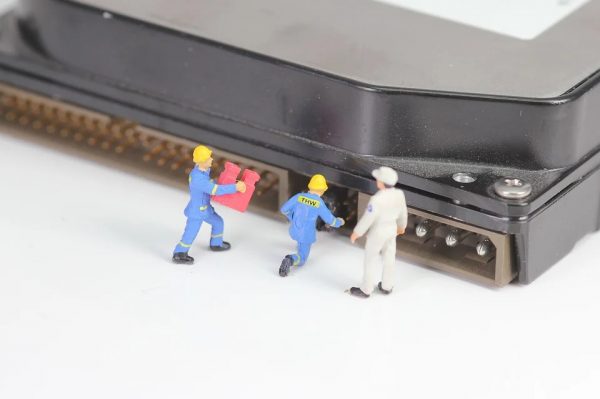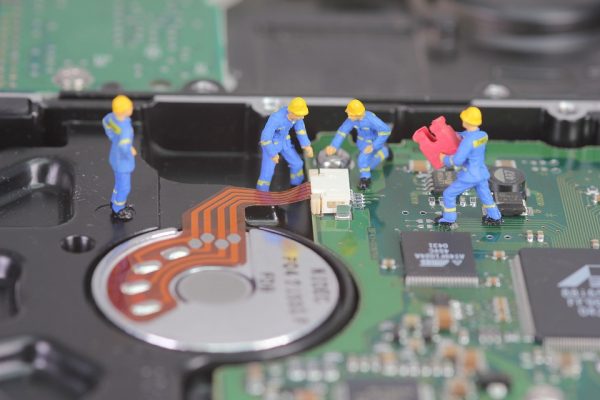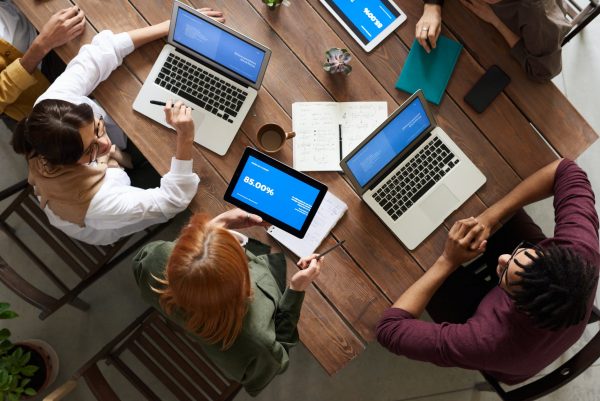What is a Refurbished Laptop?
We usually associate refurbishment with repair or restoration, but the term takes on a completely different meaning in the world of retail. A refurbished item is simply an item returned or fixed due to minor issues. In other words, the item has already lost its brand-new status. There are many ways for a product or device to lose its brand new status. Refurbishment also happens after a customer purchases an item and then returns it to the retailer, or when a retailer returns an item to the manufacturer. It also applies to when an owner of a used item gets the item restored to its original state for resale. As a general rule, you cannot label refurbished items as brand new. Since their prices are also necessarily lower than brand-new items, most refurbished devices are sold between 30 to 40 percent less than the original price.
What Qualifies as Refurbished Laptops?
Many potential cases lead to a laptop being refurbished. Some laptops are good-as-new, while others require some serious repairs before the retailers can resell them. The first and most common case deals with factory defects, like unwanted glitches in the product due to errors in the manufacturing process. You can find two classifications for defects that can be found in laptops and other retail items. Cosmetic defects are surface defects that don’t affect the performance of a product. Examples include light scratches or cracks incurred during shipping. Functional defects, on the other hand, affect the way a device functions. Faulty components or software often cause these defects. In other cases, the product or device is perfectly functional but no longer brand new. This is usually the case with laptops that are back after the seal or packaging has been broken. Customers also sometimes test products and then return them, or when customers cancel the order after it has been shipped. These products might not have any factory defects, but retailers can’t label them as brand new. In fact, the law requires manufacturers to label them as refurbished products. Many companies and individuals also sell their old laptops for secondhand use. Retailers often purchase these items, refurbish them, and then re-sell them. Retailers and manufacturers also initiate refurbishment of their own products. Some retailers send their demonstration units back to the manufacturers, which they refurbish and re-sell for discounted prices. Retailers also sometimes choose to mark down prices for their overstocked items. They also take older stocks and resell them to smaller retailers at a discount. Customers sometimes pressure retailers to recall their products due to a large number of complaints or requests for return.
Why Should I Consider Buying Refurbished Laptops?
We can think of several benefits to purchasing refurbished laptops over new ones. First off, refurbished laptops are much cheaper than brand new models. Most refurbished laptops cost 20 to 40 percent less than the original price. If you’re working with a budget, you will most likely be able to get a laptop with better specifications than if you had purchased a brand-new one. Second, refurbished laptops are also better for the environment than brand new ones. Buying a new laptop can be a wasteful exercise, especially for the environment. There’s a lot of plastics and special metals on there that are recyclable. Unfortunately, most unwanted laptops end up in landfills, where they contribute to pollution. If you want to learn new ways on how to recycle electronic responsibly, this is one of the best ways to do so. Another benefit is that these refurbished products get additional screening. Most of the time, repair centers have to pull these devices apart to repair damaged parts. Then they put everything back together and do additional testing. This is perhaps a little more than what most manufacturing plants are able to do. Repair centers also sometimes use parts that are even better than the original. Most companies also offer a three-to-six-month warranty for refurbished items. Refurbished laptops may also have a longer lifespan than your average laptop. Most companies specializing in refurbishing follow a rigorous inspection process. They usually pull the device apart into pieces, inspect them, and conduct tests on them. They then repair the parts that need it and replace parts that just don’t work.
How Can You Tell That a Laptop is Refurbished?
Refurbished laptops look essentially the same as any other laptop, so how can you tell? Retailers are legally required to disclose crucial information about their products, and that includes refurbishment. They usually include labels to indicate that the item has been refurbished. Retailers also sometimes disclose the reason for refurbishing the item. Most of the time, the reasons have to do with factory defects or that the laptop has been used. But there are also cases when they don’t. If the retailer doesn’t disclose the reason, consider the possibility that the laptop may have failed to meet quality standards. But of course, it never hurts to ask the retailer exactly where the device came from.
Considerations for Purchasing Refurbished Laptops
Before you delve into the world of refurbished laptops, there are a few things you need to know. Remember that purchasing refurbished products is a little riskier compared to when you’re purchasing a brand-new device. However, there are a few other vital considerations that you need to take into account before making your decision:
Cost
For most people, the primary consideration will cost. As we’ve mentioned, you can expect cost savings of around 20 to 40 percent on refurbished items. However, the total price still varies depending on a variety of factors. If you want to stretch the cost savings further, it’s a good idea to negotiate with the retailer. You should also avoid purchasing unnecessary accessories that may pull your total costs.
Specifications
While cost is an important factor for most buyers, it is definitely not the only consideration to make. Just like with purchasing any other laptop, you need to check the specifications of the device. When scouting for a refurbished laptop, make sure to take note of key specifications. Check the numbers for the processor, RAM, and hard drive. Then check other specs like graphic processor, battery life, and operating system. There are also aesthetic considerations like screen resolution, screen size, and design.
Laptop Model
There’s also the additional consideration of how old the laptop model is. Generally speaking, older models tend to be slower, have less storage, and poor graphics compared to newer models. Older models also equate to older batteries. Batteries that have not been used for a long time will die out faster than normal. The same is true for batteries that are always plugged in 24/7. It’s not easy to check if the manufacturer actually replaced the battery or not. If you want to learn more about devices with the best batteries, check out this list of laptops with the best battery life. It’s not just the battery you have to check, though. Other parts of older models may also be difficult to replace, especially if the laptops have been phased out for some time. If you need to do some heavy lifting with your computer, you might want to avoid models older than 2010.
Brand
Another important consideration is which company you buy from. Buying from a well-known brand reduces the risks associated with refurbishing. It also serves as some form of assurance of quality as long as you don’t buy a counterfeit version. Luckily for us, there is a growing market for consumer electronics, and you have a long list of choices when it comes to brand names. Some of the more popular examples include Lenovo, Dell, HP, Apple, Acer, Microsoft, and Huawei. Some of these companies sell refurbished products straight from the manufacturing plant on their respective websites. If you want other brands, you might have to look at third-party retailers that specialize in refurbished products. If you want to find out more about which models are worth trying out from these brands, check out this list of the best business laptops for remote work.
Warranty
The law also requires retailers to impose a warranty policy for all of their items. That means that regardless of the brand that you purchase, it should come with a warranty. A warranty is just a written guarantee promising to repair or replace items if needed within a given period. The legal requirement sets the warranty period between 45 days to 90 days, but some manufacturers offer a warranty of up to a year. It would also be great if they offered an extended warranty, but you may have to pay extra for the longer coverage.
Return and Exchange Policy
The law requires retailers to have a return and exchange policy put into place. This policy allows you to return the product within a specific period given certain conditions. Ideally, the return and exchange policy should have a validity period of 15 to 30 days. Most customers return the product when it’s not compatible with the digital description of your order. You may also return the product if it has any factory defects, whether cosmetic or functional. It also applies to when a product has missing parts and accessories. This policy is also the reason why products are sent back to the manufacturers in the first place.
Things to Do Before Finalizing a Purchase
Let’s say you’re at the store, waiting to make a purchase. Don’t forget to inspect the device for any signs of physical or software defects. As much as possible, have the retailer demo the product so you can see for yourself whether it’s working or not. It’s also important to ask if it was the manufacturer or the retailer that refurbished the item. If possible, also inquire as to which part of the device was refurbished. If the cause is a factory defect, check the part of the device that was repaired. You must also check for the warranty card or agreement that should come with the product. If you find a factory defect, just make sure to return it to the retailer within the allotted warranty period.
Final Thoughts on Refurbished Laptops: Everything You Need to Know
Buying refurbished items is becoming increasingly common over time. It’s a convenient and more cost-friendly way to go about selecting a computer that you need for daily tasks. Let’s face it: everyone needs a computer these days, but then you shouldn’t have to spend a fortune just on that item alone. It would be highly impractical to do so, especially considering that brand-new models depreciate in cost over time. By buying refurbished items, you will not only get cost savings; you’ll also help the environment by choosing a more resource-efficient approach. And if you like to be an advocate for eco-friendly technology, check out this article about the applications of green technology in daily life. We are hoping that the article has enlightened you on the process and that you’ll be able to make an informed decision when you’re out to buy your own refurbished laptop.









![]()


